by Jane St. Clair
One of the weird things about Tucson and other Southwestern cities is that they have dry streams, dry creeks and dry rivers. It has to rain hard for them to fill up –this is the Sonoran desert, after all. Most of them are dry all the time.

The neat thing about living near a desert wash or dry creek is that –even though it’s dry nearly every day of the year– it attracts animals.

I have often seen a herd of javelina in our desert wash, especially in the morning, and although they have a bad reputation for charging after you with their tusks, I rather like them. My dog, who is a simpleton, thinks they are our friends.

Javelina are strange hoofed creatures, mostly blind and objectively ugly, although I think their babies are adorable.
But I digress.

The wash also is a watering place for bobcats, quail, rattlesnakes, lizards, rain toads, packrats, and an occasional puma on the occasion of rain.  But I digress.
But I digress.
Recently it rained so hard that our wash filled up and ran like a real stream back East. It made this rushing swirling sound I had not heard in months, and I’d forgotten how beautiful and restful that sound is.
I decided to go down to the Rillito River to see if it were running too.
Tucson’s Rillito River is ordinarily a dry patch of abandoned waterway where dogs run and joggers exercise. Normally it’s a park.

But on the last occasion of rain, the Rillito River filled up and you actually needed the bridge over it on River Road. The water was running so fast that it looked as if it would uproot a few trees.

I had forgotten the sound of mighty rushing waters, the way it cascades and rushes over rocks and makes its bubbly way downhill — you just don’t see that in the desert. I had forgotten the sound and movement and urgency of it, and its hypnotic ways that carry you along with it. Within a day, both the wash behind the house and the Rillito River were back to being patches of empty dry space in the desert, a place the fishes had abandoned eons ago when this whole area was under water.
But the rain did make the desert washes so beautiful.

Now it’s warm and dry again so that the sound of rushing water has become a memory. Now all that’s left for the javelina and quail and other desert animals to do is to wait for the next rain.
. . . . . .
* * * * * * * * * * * * * *
It’s Rodeo Week in Tucson! See Jane’s Rodeo Post and official information on 2015 rodeo
Tags: Arizona · Arizona photography · AZ · Jane St. Clair · Tucson · Uncategorized
by Jane St. Clair
Biosphere 2 sets on the Sonoran Desert near Tucson, Arizona, as something that does not belong there. It’s as big as two football fields and looks as if it landed from outer space. Space aliens who knew Mayan architecture could have built the temple building and the funky one near it shaped like a giant white door knob.
In any event, there’s nothing else like Biosphere 2 on Biosphere 1 — the name Biospherians give our planet earth.
Biosphere 2 was the brainchild of John Allen, who once lived on Synergia Ranch, a 1960s hippie commune near Santa Fe, NM. Allen believed that the human race would end through nuclear war or environmental disaster. He envisioned a few people surviving in a sealed environment, perhaps even on another planet, who would save our species.

Psychedelic Biosphere
Lucky for him, Allen was a friend of a Texas oil millionaire willing to put up $150 million to build Biosphere 2.
A new team of 12 Biospherians were supposed to enter Biosphere 2 every two years for a hundred years. The five “biomes” or areas that mimic earth’s desert, rain forest, savannah, marshes and ocean would supply all their needs in a completely sealed environment.

Biosphere’s ocean is puny.
The first team entered September 26, 1991, looking mega-cool in Trekkie uniforms. Most of them knew each another –some from Synergia Ranch. A Time Magazine reporter wrote that they talked “mystically” about their friendships and belief that nothing could ever go wrong in a bubble-world of 3800 species. They walked through that sealed door with great expectations. 
Right from the start, however, the experiment ran into trouble. The very first week one Biospherian cut her finger off and had to break the seal to go to ER. Later people accused her of smuggling supplies in her duffel bag.
Within a month everyone was losing weight and feeling weak and hungry. Although they were growing large amounts of food, the Biosphere 2 team was not getting the calories they needed from their plant-based diet to do the physical work of farming. All they could think about was food. They got into competitive porridge-making and a fantasy game about pretend desserts.  They ate their three-month emergency food supply. Then they ate their seed stock, a two-year supply of dried fruit and other monkey food, as well as birdseed and hummingbird nectar. As one member put it, “We were suffocating, starving and almost going mad.”
They ate their three-month emergency food supply. Then they ate their seed stock, a two-year supply of dried fruit and other monkey food, as well as birdseed and hummingbird nectar. As one member put it, “We were suffocating, starving and almost going mad.”
Their fish were dying off, and fish bodies were clogging up the water filtration systems.The Biosphere 2 team also spent a lot of time stomping on ants and cockroaches, who were taking over the building.

Meanwhile, oxygen levels dropped to life-threatening levels. Nearly every animal with a backbone died. The Biospherians grew weak, tired, and irritable. They suffered from altitude sickness and sleep apnea.They must have felt like they were in prison. The windows have bars. They look out on a vast empty desert. 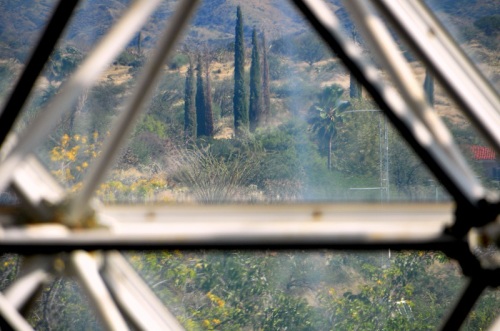 Their average weight loss was nearing 18% of original body weight. On December 19, 1991, the project managers gave up, broke the seal and pumped 600,000 cubic feet of air and 21,000 tons of liquid oxygen into Biosphere 2.
Their average weight loss was nearing 18% of original body weight. On December 19, 1991, the project managers gave up, broke the seal and pumped 600,000 cubic feet of air and 21,000 tons of liquid oxygen into Biosphere 2.
The team made it to the two-year point, but by that time, they were divided into groups that were not speaking to each other.
A second team entered in February 1994 even as their millionaire-backer was investigating misuse of funds. John Allen resigned.
On April 4, 1994, two members of the original team, upset about Allen’s resignation, opened an air-locked door and three emergency exits. Then they broke five panes of glass to effectively ruin the second experiment.
 They were arrested and charged with burglary and criminal damage. The project managers ended the mission prematurely in September, and there has never been another team living in Biosphere 2 since.
They were arrested and charged with burglary and criminal damage. The project managers ended the mission prematurely in September, and there has never been another team living in Biosphere 2 since.
The 100-year experiment clearly failed. One source called it not science, but a $150 million vanity piece. Biosphere 2 was on Time’s list of the 100 Worst Ideas of the 20th Century.
Nevertheless, there is something wonderful about Biosphere 2. It’s a monument to the Trekkie Dreamer in all of us. It’s a symbol of the part of us who raced to step on the moon, who put that spider-y looking probe on Mars, and who managed to land a spacecraft on a tiny comet traveling 38,000 miles per hour in space.
Live Long and Prosper…

And let the dream endure forever!
For information on visiting Biosphere 2 (you can actually go inside), go to this website
Biosphere 2
Tags: Arizona · Arizona photography · AZ · Jane St. Clair · Tucson · Tucson Tourism · Tucson Tourist Events
by Jane St. Clair
Just now we’re going through another bitter Arizona winter with highs around 65 degrees. Outside my window the desert and the mountains look pretty much like they always do. Our only seasons are early summer, summer, high summer and late summer.
We may dream of a white Arizona Christmas, but it’s not going to happen anytime soon. When it does snow in Arizona, we all go a little nuts.

We’re more likely to light up a saguaro than an evergreen tree. And while we will deck the halls with boughs of holly, outside our windows

an Arizona Christmas looks more like Midwest in the fall than a typical winter landscape back East. We put up the holly anyway.
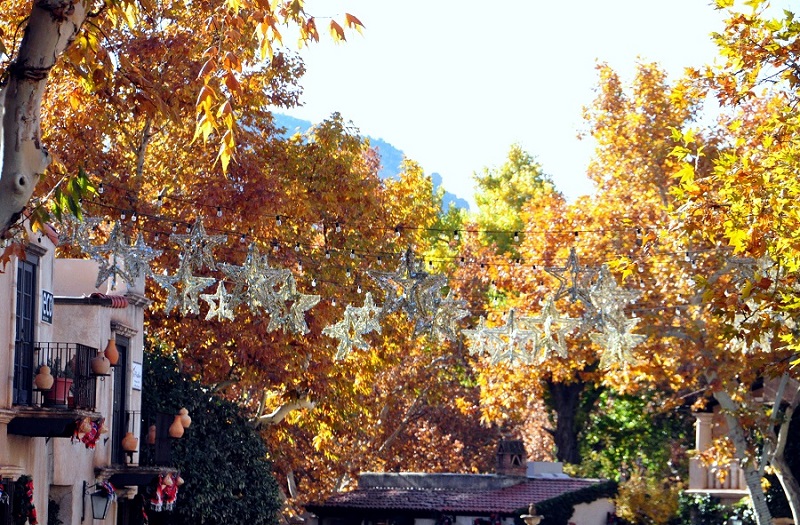
Like people all over the world, we decorate and light up Christmas trees. Okay, we decorate and light up cactus.

We have to make do without the whole snowman thing. We’ll sit around with hot chocolate and pretend that it’s cold outside.
Jingle bells. Jingle bells.

During the nine days of Christmas, we may participate in posada ceremonies. The final ceremony ends on Noche Buena (Holy Night) or Christmas Eve. It’s a great night to eat holiday tamales.
While an Arizona Christmas may not seem traditional, in some ways it may be the most traditional of all. The reason is Arizona often reminds world travelers of the Holy Land.
I think the first Christmas would’ve looked something like what you find here out West. We’re closer to that feel than we are to Madrigal dinners in Merry Olde England or some such thing. You can picture a donkey carrying Mary here, and the Holy Family and the manger in some dusty old desert cave.

Like Bethlehem, an Arizona Christmas has black skies with bright steadfast stars that light up in glory after magnificent sunsets, sometimes with just a few stars and a bright backwards Arab moon.
Do you see what I see?

A star, a star dancing in the night!

He will bring us goodness and light!
 IT’S FELIZ NAVIDAD FROM ARIZONA TO YOU!
IT’S FELIZ NAVIDAD FROM ARIZONA TO YOU!
To plan your visit to Winterhaven, Tucson’s annual festival of lights, go here.
Tags: Arizona · Arizona photography · Jane St. Clair · Tucson · Tucson Sonoran Desert · Tucson Tourism · Tucson Tourist Events · Uncategorized
Mexican Dance! Danza Mexicana !
by Jane St. Clair


The elder prays for all the people who are crossing the desert today, that they might not die from the heat and their thirst.

No more deaths on the desert, the elder prays.

Then the drums begin and the dancers march into the room, single file.

The only music is drums, but what incredible drums they are, how loud and fast, you feel like dancing but your feet do not know the steps.


The elder tells the story of when the Anglos first came here. They asked their guides, Who are these people who live over the mountains there?
And their guides answered, They are Aztec which means people who wear feathers. Aztec.
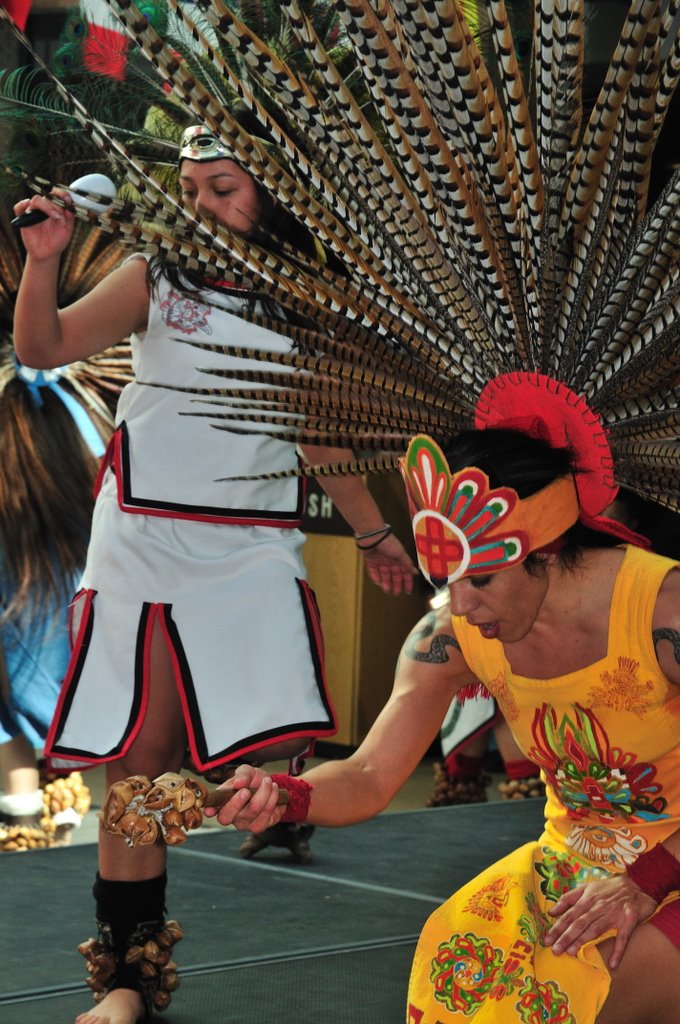
But Aztec is not who we are, said the elder. We are Chicano, which means people of the land.

The Anglo came and thought they discovered a new land. But we were already here. We discovered them when they came off their strange boats.
We welcomed them. They were hungry, so we fed them. They were thirsty, so we gave them something to drink. They were tired so we offered them shelter.

What did they give us in return? Our history is not so good.

At the end of a year, the Anglos celebrated their survival. But we already knew how to survive on this land.

Today both Anglo and Chicano share a concern. We worry together about poisons in our desert land, poisons in our air and our water.

We ask together that these poisonings may end.
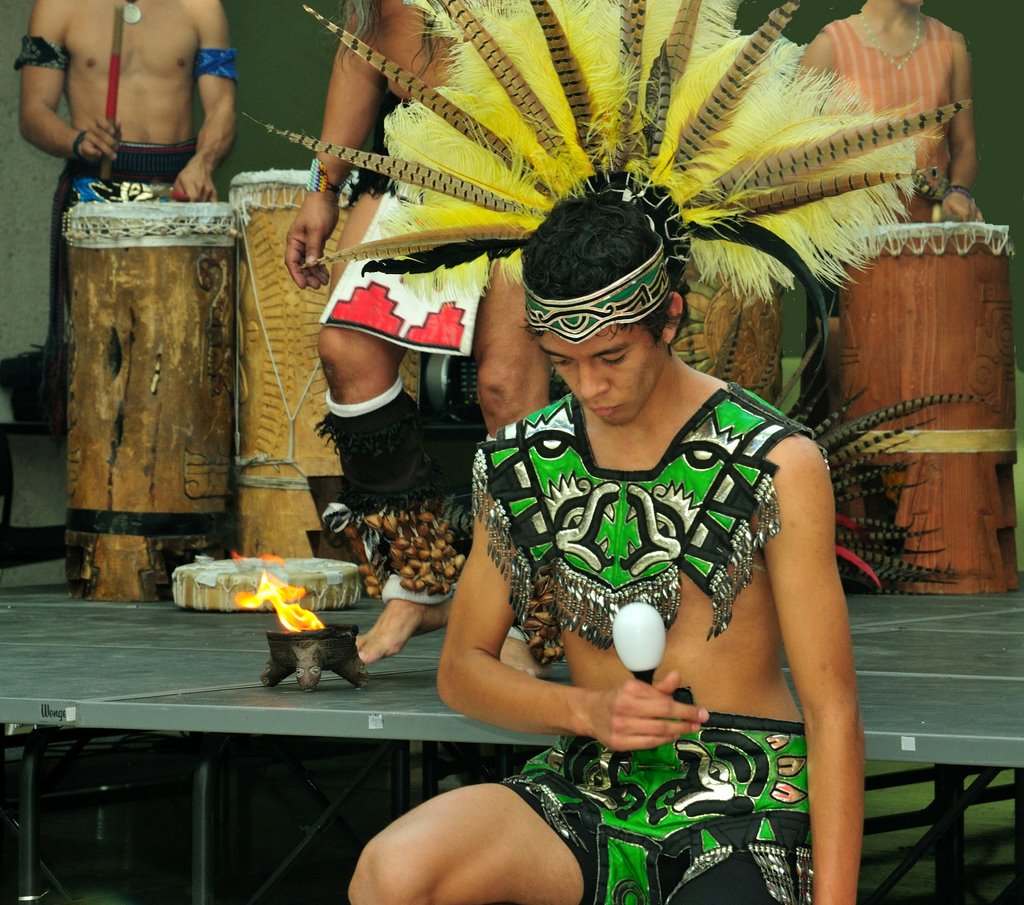
No more deaths on the desert, and may all people live in peace and thanksgiving.

For more information on Mexican dance in Tucson, see Ballet Folklorio La Paloma
Tags: Arizona · Arizona photography · Jane St. Clair · Tucson
September 16th, 2014 · No Comments
by Jane St. Clair
Kachinas live in the San Francisco peaks near Flagstaff, Arizona. They come and visit the Hopi people during the first half of every year.

Dolls and dancers are called kachinas but they are not kachinas — they just represent them.
Kachinas are actually spirits.
Most kachinas are good and helpful, . 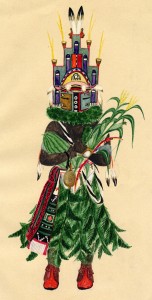 . but some are mean and even dangerous.
. but some are mean and even dangerous.
As a human being you too are a spirit, and the Hopi believe you began in the Underworld when you were born, and you will return there when you die.
Animals, plants and all living things have spirits or kachinas. Owls, foxes, rattlesnakes:
 ….
…. ….
….
eagles, crow, bear, deer, corn and fruit– all have kachinas but then so do clouds, rocks, mountains, lakes, and other natural things. To the Hopi, all of these are alive, spiritual and interconnected. The Hopi say all things have two forms: their visible form in the Upper World, and their kachina who lives in the lower world of the spiritual.
A kachina can show itself in this world. For example, if you see clouds form over a mountain — it is a rain kachina.

To carve a kachina doll is to perform a sacred rite. You have to find a water-seeking cottonwood root or else it has to find you. You have to sense the spirit of the kachina before you make your first cut. You may meditate over the wood first. You never burn or destroy a real kachina doll — not even their wood shavings. One Hopi artist said selling your dolls would be like selling your children. Hopi give real kachina dolls to their children not as toys but as a way to teach them about kachinas.
A carver of the kachina connects to the spirit world when he works. An impersonator of the kachina does the same when he dances. The spirit of the kachina comes over him when he wears the costume, and as he dances, he loses his human identity. It is something like the spiritual miracles that occur during the Catholic mass.
and as he dances, he loses his human identity. It is something like the spiritual miracles that occur during the Catholic mass.
The Hopi people ask the kachinas to carry prayers to the gods during their annual visits, and to ask for rain and harvest and other blessings.
The Hopi strive to live the Hopi way with every moment of their lives in harmony with their community and nature. In some Hopi dances, clown kachinas act in un-Hopi-like (Qahopi) ways. If they goof around too much, they may face discipline from another kachina to bring him back to the Hopi way.
act in un-Hopi-like (Qahopi) ways. If they goof around too much, they may face discipline from another kachina to bring him back to the Hopi way. Hopis who stray too far from the Hopi path may be in danger of losing their children to ogre kachinas.
Hopis who stray too far from the Hopi path may be in danger of losing their children to ogre kachinas.
Kachinas are powerful magic so I don’t wish to write more about them.
The secret of their beauty is that the meaning they embody is beautiful.

“To feel the love of people whom we love is a fire that feeds our life. But to feel the affection that comes from those … who are watching over our sleep and solitude, over our dangers and our weakness — that is something still greater and more beautiful because it widens the boundaries of our being and unites all living things.” —Pablo Neruda.
Tags: Arizona · AZ
by Jane St. Clair
The town of Flagstaff, Arizona is near forests of tall trees. They used to cut the trees down to make flag poles, and that’s how the town got its name.
The trees in Flagstaff forest are tall, and they are far apart, so that when you are walking along, you aren’t in deep shade but going through open spaces with sunshine. The tall shadows of the trees look like Yei people or the tall skinny figures that Giacometti sculpted. A tall skinny forest as opposed to a dense forest is very beautiful in its own way, and it also reminds you of how really short you are.

Walking around Flagstaff forest, I keep seeing reminders of how these trees were once made into flagstaffs and later into telephone poles. A row of trees is actually growing next to a row of telephone poles, which is totally weird, 
as weird as seeing a clothesline in the middle of a field of cotton. The telephone poles also make me think that beautiful tall trees can end up like this.
. . . . . . .
As I walk further into Flagstaff forest, I see the remains of a forest fire –black stumps, trees that had fallen over, and piles of wood salvaged from the fire.
Was it lightning or was it man, Bambi?

So far this walk has not been great because I’m feeling sorry for Friend Trees, but I keep walking until suddenly the land is greener and more alive. I see a bright emerald meadow filled with yellow wildflowers underneath the shadows of the mountains.

It is a joyful thing to see renewal –to find this Noah rainbow. The forest in all her pied beauty is renewing herself right before my eyes, as she always has renewed herself and will always in the future –telephone poles notwithstanding.
Shakespeare asked “Shall not such beauty last forever and ever?”

Yes, I think the only answer is yes. Yes. Yes.

Tags: Arizona · Flagstaff
by Jane St. Clair
If you live in Arizona or any other hot Southwestern state, you may own a swimming pool, and your chances are very good that one of these days a lizard will fall into it. As a matter of swimming pool safety, it is your duty to learn how to resuscitate a lizard.

Lizards in Arizona don’t do much except stand around and sun themselves all day long, and do their little push-up things.

However, occasionally lizards get energetic and fall into swimming pools.
When this happens, and it will definitely happen to you, you need to know how to resuscitate friend-lizard. First, put on your SCUBA outfit, dive heroically into the pool, and pull him out. Then hold him by his tail and shake him until all the water comes out of his little mouth.

If friend-lizard is still not breathing, you will need to do chest CPR or Cardio Pulmonary Resuscitation. Place the poor little thing on his little lizard back, and stick your fingers on either side of his little rib cage. Gently press with your fingers until more water spurts out of his mouth and he is breathing again.

If friend-lizard is still comatose, you will need to do mouth-to-mouth resuscitation. Yes –you do too need to do this, and you will do it because it’s the kiss of life, and after all, this is a fellow creature. Albert Schweitzer taught reverence for life and now is the time to practice it.

With a little luck, your lizard will turn into a handsome prince and POUF! ….
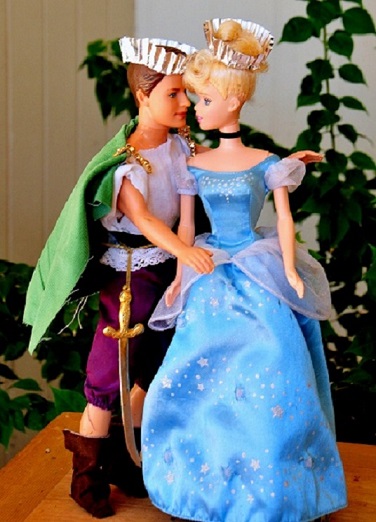
…. You’ll be set for life.
More likely your lizard friend will wake up terrified of you and jump back into the pool. In this worst-case scenario, you have to repeat all the above steps one more time or into infinity, as lizards never learn their lessons.
No lizards were hurt in the production of this public service message.
… . . .. …….. . . . . . . . ..
Update: By the way, true story! — someone did resuscitate a drowning lizard. See Drowning Lizard gets CPR. See, this website has practical uses. Update: After this post appeared, I heard from a lizard expert in Australia. You really can do this but do it this way.
Ralph Waldo Emerson said, “Be silly. Be honest. Be kind.”
Tags: Arizona · AZ · Humor · Jane St. Clair
by Jane St. Clair
In the middle of the Depression a bank robber named John Dillinger became the FBI’s first Public Enemy Number 1. Every police officer and G-man in the country were out to get him.

Even though he was Public Enemy #1, the public liked John Dillinger. The public did not like banks because they took away houses and farms, but they did like the cool, handsome Robin Hood who robbed banks. Dillinger would spray the air with machine gun fire and then ride off in his getaway car. Everyone liked Dillinger so much that the Hudson Motor Company advertised one of their models as the car John Dillinger used.
Dillinger would spray the air with machine gun fire and then ride off in his getaway car. Everyone liked Dillinger so much that the Hudson Motor Company advertised one of their models as the car John Dillinger used.
Today Dillinger and his gang are not as famous as Bonnie and Clyde, mostly because Bonnie and Clyde had a better movie. But back in the day, Dillinger was the bigger deal. In fact,  he stole 16 times more money in one year than Jesse James did in his entire career.
he stole 16 times more money in one year than Jesse James did in his entire career.
In the winter of 1934, Dillinger and his boys –Harry Pierpont, Charles Makley and Russell Clark– needed a vacation.

Like typical winter visitors to our fair city, they were looking to relax in a warm place. They believed police in a hick town of 30,000 would be too dumb to get them. Tucson’s police department had 34 guys who earned $140 a month — small potatoes to the Dillinger Gang who had evaded cops in four states and Hoover’s G-men and stolen hundreds of thousands of dollars.
On January 25, Charles Makley and Harry Pierpoint checked into a third floor room at the Congress Hotel.

Fire broke out that night in the hotel basement. The clerk at the switchboard phoned every guest in the hotel, including Dillinger’s friends, and told them to leave at once. 
Later the fireman who pulled them to safety remembered how heavy their suitcases were. Makley had tipped them $12 to retrieve the luggage and pull it down the aerial ladder. His suitcase was heavy because it contained pistols, bullet proof vests, machine guns, rifles, and $23,000 in cash.
The next day the firemen were sitting around the firehouse, smoking, eating chili and reading True Detective magazine, which is what they did when nothing was on fire.
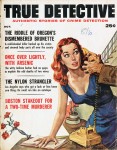
As they thumbed through the pictures, one guy recognized the two men from the night before, and he tipped off the police.
Officers nabbed Makley at Grabbe Store downtown where he was buying a radio capable of picking up police calls. Pierpont and Clark were taken at a gas station and the Close-In Motel on 6th Avenue. Dillinger was arrested at 927 E. Second Avenue near the University of Arizona. He was so surprised that all he said was, “I’ll be damned.”
It was the arrest of the century, and it had been pulled off without anyone firing a shot. The gang was sent back to the Midwest to face charges of murder, robbery, and other offenses.

Dillinger escaped from prison in Indiana by using a fake gun he made from wood and painted with shoe black polish. On July 22, police and G-men killed him with four gunshots in front of the Biograph Theater in Chicago.
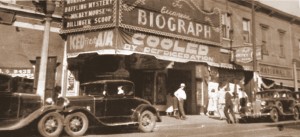
The famous “Woman in Red” had given him up in exchange for a promise of not being deported to Romania.
Makley was killed by police during a prison escape. Pierpont got the electric chair.
Russell Clark was in prison for 34 years and died four months after his release.
The Tucson police officer who arrested Dillinger got to keep Dillinger’s bullet-proof vest, and today his badge hangs in the Arizona History Museum on Stone Avenue.
The Hotel Congress is now a historical site.
The Woman in Red got the reward money and then the U.S. government deported her to Romania.
. . . . . . . . . . . . . . . . . . . . . . . . . . . . . . . . . . . . . . . . . . . . . . . . .
. . . . . . . . . . . . . . . . . . . . . . . . . .
You can see Dillinger stuff at the Arizona History Museum at 140 North Stone, Tucson, and more Dillinger pictures on “The Arizona Historical Society Website”
Tags: Arizona · Jane St. Clair · Tucson · Tucson Tourism
by Jane St. Clair
If I could offer you one word to describe the way spring comes to the Sonoran desert, the word would be “soft.” Spring walks into the desert on soft feet so quietly that you cannot hear her footsteps approaching. Sometimes she touches you as a soft warmth that brushes against your face like the memory of a lover’s caress. Desert spring enters soft here in the Sonora, as soft as clouds scudding by in a nonthreatening sky.
…

…
When you’re in the desert spring, you don’t hear robins. You don’t see flowered cherry trees and tall purple lilacs like you do back East. In the Sonora you won’t see a dramatic transformation of black stick trees thick with ice turning into the green pliable new growth of spring.
Desert spring is softer, more subtle than that. It’s about the pale yellow and brownness of winter  slowly becoming a million shades of pastel green – subtle shades, April shades.
slowly becoming a million shades of pastel green – subtle shades, April shades.
…

Spring gently asks winter to make his departure, and then her drama accelerates. Palo Verdes burst into bright yellow lighting against a turquoise sky –every bit as electric as a Van Gogh. 
…
Snow and ice that live on top of the Catalinas melt and trickle down the mountain sides, filling the dry streams and thirsty empty river beds.  Suddenly wild flowers are in bloom, and they always surprise you when you make a sudden turn on a trail or arrive at a peak where you can see them, like Wordsworth coming upon his host of golden daffodils dancing and fluttering in the wind.
Suddenly wild flowers are in bloom, and they always surprise you when you make a sudden turn on a trail or arrive at a peak where you can see them, like Wordsworth coming upon his host of golden daffodils dancing and fluttering in the wind.
…

…
Bouvardia carry fire red blossoms up and down their thorny arms, and ocotillo  carry theirs like candlesticks lit in flame.
carry theirs like candlesticks lit in flame.
…
Cactus produce their tough waxy flowers that rest absurdly on their tops like Easter bonnets. A mama quail and her chicks parade and strut their chic feathers like 5th Avenue society types.
that rest absurdly on their tops like Easter bonnets. A mama quail and her chicks parade and strut their chic feathers like 5th Avenue society types.  Baby snakes and bunnies who have not learned to hide now hide in plain sight. Spring is its own time like no other season, and with it come these flowers and animals, unlike any other time. As Chuang Tzu wrote, “An insect of summer cannot talk about ice.”
Baby snakes and bunnies who have not learned to hide now hide in plain sight. Spring is its own time like no other season, and with it come these flowers and animals, unlike any other time. As Chuang Tzu wrote, “An insect of summer cannot talk about ice.”
Spring is the only soft time on the Sonora and all too soon the sun becomes a cruel torch in the sky that burns down the subtlety of the season, and turns the desert into the brown dormant ashes of her summer inferno.
…

…
Yet within her gentleness, spring is stronger and more steadfast. And she leaves you a promise, like a promise from a trusted friend, that she will return again same place, same time, next year.
”
Tags: Arizona · Arizona photography · Jane St. Clair · nature essay · Oro Valley · Tucson · Tucson Sonoran Desert · Tucson Tourism
by Jane St. Clair
Last night there was a complete lunar eclipse, and what was amazing was that in the middle of it, the great round white moon turned red. Or as the drama queens among us put it, “blood red.” This is the blood red moon with a star.
…..

A lunar eclipse is a predictable event for modern people, but when I was watching it, I couldn’t believe my eyes.

It was like watching the moon fast-forward – seeing 28 days of moon phases occur within a few hours.


Then, of course, the eerily beautiful bright red moon glowed at the climax like an angry red planet. Something so beautiful could not last so once the red moon appeared, she undid herself by phasing out backwards.



…
Here in Tucson, Arizona, we are lucky to be able to watch this beautiful lunar eclipse so clearly. We are out West where we can still see the stars (although not as well as sailors can see them on board ships at high sea). Tucson worries about things like light pollution and having too many streetlights because we have many amateur and professional stargazers, including several men who are at the same time scientists and priests, and who report to the Vatican about the goings-on of stars.
…….

Isn’t it nice to think that there are still wise men asking eternal questions and looking to the stars for answers?
Anyway, as I watched the beautiful moon dance and put on her light show, I knew why such a thing would terrify an ancient person.
…….
It’s a fearful thing –a lunar eclipse—even as we modern people put it into ordinary time and classify blood red moons as predictable things. We line up the phases of the moon like cans of tomato soup.
….

……
But blood red moons are magic. Sheer magic.
…….
Shakespeare wrote, “Oh wonderful, wonderful and most wonderful wonderful, and yet again wonderful, and after that … wonderful!”
…..

Maybe he was talking about a bloody red lunar eclipse.
Tags: Arizona · Arizona photography · Jane St. Clair · nature essay
 But I digress.
But I digress.




























 IT’S FELIZ NAVIDAD FROM ARIZONA TO YOU!
IT’S FELIZ NAVIDAD FROM ARIZONA TO YOU!

































































